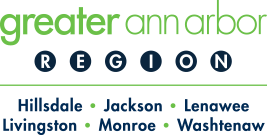News that the American Center for Mobility in Ypsilanti Township is now a nationally-designated proving ground is not only great for our region, it’s great news for our country. It means we are taking serious steps towards leading the world in the development of connected and autonomous vehicles, and doing it in the right way.
This is also a moment of reflection that gives us a chance to look back at the progress at this site over the past few years, and why this designation is such an important milestone of the work an entire community did together to achieve it.![ACM Draft Site Layout LR[6]](http://blog.annarborusa.org/wp-content/uploads/2017/01/ACM-Draft-Site-Layout-LR6-300x200.png)
In 2009, General Motors announced it would close its Hydramatic facility, the latest operation to sit on a historic site at Willow Run. We were in the depths of the recession and it highlighted how far Michigan would have to come to regain its economic footing. Ownership of the site was transferred to a new entity, RACER Trust, that was charged with bringing 54 GM sites back into productive use. The building remained in tact with the hopes that a new user would be attracted to the existing structure and heritage. Ultimately, the building was demolished except for a small portion that will be used by the Yankee Air Museum to showcase how B-24 bombers left the building during World War II.
Demolition created a new canvas for the future of the site. Ann Arbor SPARK recognized this opportunity and began to conceive of turning the area into something that would help Michigan lead in the next generation of vehicle technology. In 2013, connected and automated vehicle technology was becoming a viable option for automakers, and a lot of R&D began in that space. There were no purpose-built places to do this work.
Ann Arbor SPARK’s work is to look for opportunities and take intentional steps towards improving the economic health of our region. We consider our unique assets – in this instance, Michigan’s rich automotive history and a deep talent pool here to support the industry – and actively work towards leveraging them to create jobs and investment.
In this instance, Willow Run provided the inspiration for Ann Arbor SPARK to consider what’s next for the automotive industry, and how to position this region for long-term success. It was the impetus for us to publish “Ahead by a Century,” our whitepaper on the opportunity at Willow Run. Since then, we’ve seen established a number of new mobility R&D facilities. Leading the charge has been Mcity, the premier space for connected and mobility research on campus at the University of Michigan (U-M), which planted the flag in Ann Arbor as a continued center for the future of mobility. Mcity is exceedingly busy, which underscored the need for additional facilities. We also learned that things like a large high-speed loop and expanded simulated urban environment are critical to validating these technologies.
With that in mind, we partnered with the Economic Development Administration on a feasibility study surrounding Willow Run and what would become the American Center for Mobility. We convened a number of organizations, including the Michigan Economic Development Corp (MEDC), Ypsilanti Township, Center for Automotive Research, U-M, Business Leaders for Michigan, Washtenaw County, Michigan Department of Transportation (MDOT), and Congressional leadership. This coalition met with industry leaders and developed a concept facility that could meet the standards of this constantly changing technology. It was clear that this was an opportunity for leadership in Michigan.
The Willow Run site, where B-24 bombers were made during World War II in a factory built by Henry Ford, will become the American Center for Mobility, a national-scale advanced automotive testing and product development center. It will accommodate the broad needs of industry and government, test various weather conditions including ice and snow, and provide room to grow and adapt as technology dictates. Willow Run is a cost effective location for this type of activity, with numerous structures already in place, including double overpasses, which will serve as the perfect environment for researching and testing mobility technologies. The center will focus on testing, verification, and certification of connected and automated vehicles.
Ypsilanti Township, MEDC, and MDOT have played a big role in getting to this point. The MEDC has led the charge with initial investment, technical support, and guidance. An entity was established to purchase the property from RACER Trust, and the American Center for Mobility (ACM) was created as an organization, with John Maddox of U-M’s Mobility Transformation Center leading the effort. Ypsilanti Township has provided guidance throughout the process and is supporting the project with critical incentives to make the project a reality. Along the way, Ann Arbor SPARK has continued to champion the project, to ensure that the future of the automotive industry – and the jobs and investment that it will entail – evolves in this region.
At the 2017 Consumer Electronics Show in Las Vegas, AT&T and ACM announced a partnership to provide investment into the site and for AT&T to become the wireless infrastructure provider at the site, which is critical to vehicle testing and validation.
It’s taken leadership, collaboration, and teamwork to reach where we are now at ACM. There’s still so much work to be done, but the foundation on which progress will be built is strong. The national designation is another step in the development of the site. It shows recognition of the amazing mobility assets in Ann Arbor and around Michigan. It will also serve as one more proof point that Michigan is the most compelling place to do this work. It keeps momentum at ACM moving forward.
Source: SPARK







